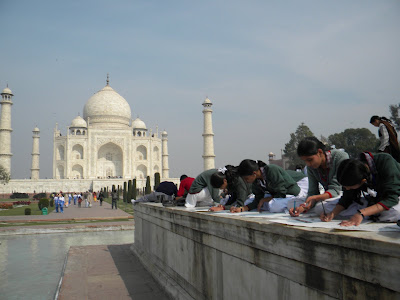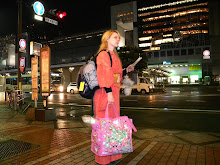
"He keeps looking at me," I complain somewhat unreasonably to the camel driver.
"Camel is not looking at you. He is looking for other camel," the driver says.
"I am not a camel," I carefully explain to the camel.
The camel continues staring at me. He blinks his long-lashed eyes and snorts in derision.

At a prompt from the driver, who clicks his tongue and tugs the lead rope, my camel faces forward once more and continues walking into the sun. I gently rock back and forth in the saddle as we trek the golden, glowing crests of sand dunes. The dunes seem to stretch into infinity, though in actuality, they only stretch into the border of Pakistan. I am in the Thar Desert, located over 40 km from Jaisalmer, India. But how did I get here?

"Bed rest one week!" the doctor sternly tells me two days prior. "BED REST ONE WEEK," he writes in all caps on top of my hospital papers and X-ray chart. "And move your toes often," he adds seemingly as an afterthought.
I wriggle my toes furiously as I wobble onto the warm sands of the Thar Desert. Two days have now passed since I broke my foot, two days in which my activity has slowed but never stopped. My friend Katie is jaunting through a more distant stretch of the desert on a fast and bumpy 90 minute camel ride. This is what I would have liked to have done, to have spent a couple hours or even a full day on a camel. My own, slow 30-minute walk near the camp, though, is enough to make me happy. I feel it is a fair compromise between how I want to spend my time and how the doctors want me to spend my time.
As we slowly trek up and down the long sand dunes, the camel driver tells me funny rhymes. He claims they are old Indian aphorisms.
No hurry, no worry. No chicken, no curry.
No work, no wife. No chai, no life.
No woman don't cry.
The camels are restless as we ride them. It's mating season and the drive to find a mate is very high. To prevent one especially romantic camel from wandering off last night, the driver had bound three of its legs together with rope. But true love always finds a way. By morning, the camel was gone.
 {my other means of desert transportation}
{my other means of desert transportation}During my time in the desert, I smile and I laugh. I chatter happily to anyone who will listen. But it is not easy for me. None of it is easy for me. Not bouncing over rough and sometimes unpaved roads in an open jeep to get to the desert, not hopping one-legged through sand, not mounting the camel, who nearly throws me off in the unexpected pitching first backward and then forward as it unfolds its long, skinny legs to stand, not riding the camel while carefully holding out my injured leg so that the hard cast does not bounce against the camel's back and spook it. But I do it, all of it, even the hardest bits. I even truly enjoy it.
Anything, now, seems possible.
 {clouds the colour of fire in the Thar Desert}
{clouds the colour of fire in the Thar Desert}







































